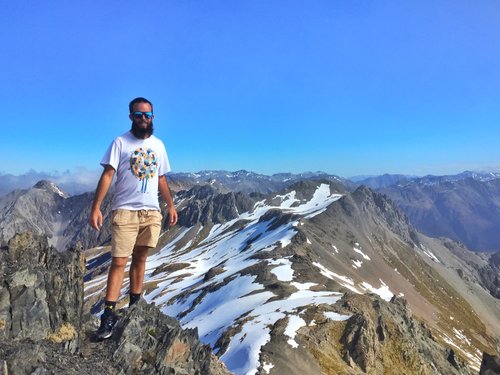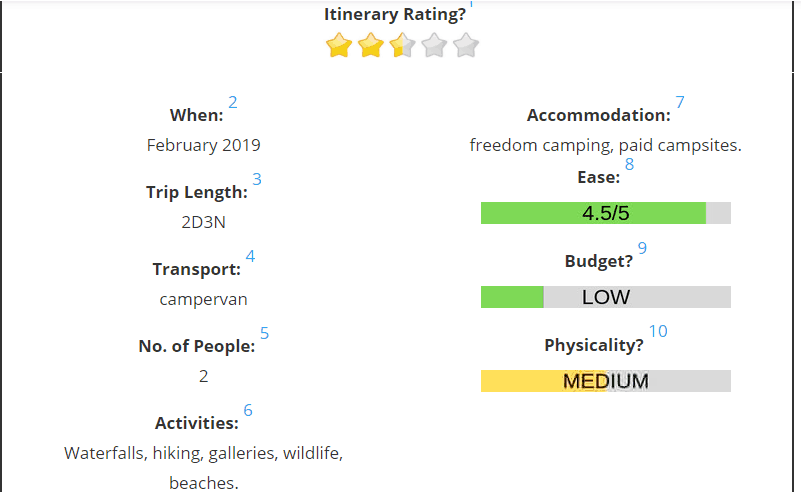The itineraries detailed on Chur New Zealand are written from actual trips people have taken. This lets you to:
- Take the best parts from their trip
- Learn from their mistakes
- Take advantage of NZ travel tips based on experience
- Get new ideas
With this knowledge, you’ll have the building blocks of your perfect itinerary. You can think of them as case studies.
I can hear you saying “But Jub, why should I not just follow someone’s itinerary exactly as they’ve done it?”

I would include Avalance Peak on my perfect Arthurs Pass itinerary, but with 1000+ metres elevation in less than 5km, not everyone will love this. So why would you include it on your itinerary?
Because we’re all different. And while there are going to be lots of 5-star itineraries on this site, that trip still doesn’t mean it’ll be perfect for you.
I could go on for hours about this, but I won’t. In short, just because someone loved their itinerary, it doesn’t mean their travel style is anything close to yours (see the photo above).
The main variables that influence itineraries are slow vs. fast travel, time of the year, interests, and budget.
But that doesn’t mean we can’t learn from everyone.
In essence, if you crowdsource info from multiple itineraries here at Chur New Zealand, you’ll be able to refine the spine of your itinerary and gradually add in the finer details as needed.
As you read the itineraries, you’ll see the same format throughout. What each section means is detailed below.
ABOUT (INSERT LOCATION)
A brief introduction to the location/region/route the itinerary covers.
ITINERARY BREAKDOWN
If you want to validate whether or not the itinerary is appropriate for you, this section will be vital. This is what they look like:

And this is what it all means.
Itinerary Rating:
This is a self-reported trip rating from the person whose itinerary it was. With everyone going to be providing a different rating, this won’t be the perfect scale. But while talking with them, I’ll do my best to make sure they’re giving proper thought to their consideration.
Trip Length:
D = days
N = nights
For example: 3D2N = three days, and two nights.
Time to get to the origin point of the itinerary is not included.
Transport Type:
A list of the methods of transport used to get between destinations in order from the most, to least common. This does not include transport for specific activities (if you do whitewater rafting for an hour, this won’t be included).
E.g. campervan, rental car, hitchhiking, bus, rideshare, tour, walking.
No. of People:
How many people were present for the majority of the trip. If people joined or left midway through, that’ll be mentioned in the trip report.
Trip Focus:
There will usually be a theme to most itineraries. This will give you an idea of what the itinerary includes.
E.g. hiking, jungle, mountains, forest, parks, waterfalls, museums, wine, culture, beach.
Accommodation Type:
A list of accommodation types used on the trip. Options include:
Hotel, Hostels, B&B, Airbnb, Motels, Camping, Freedom Camping, Resort.
Ease:
This is a scale of how easy it is to replicate the itinerary.
For example, if the itinerary involves summitting Mount Cook, this would make the trip very difficult to replicate as very few are going to be capable of this. Alternatively, a road trip from Auckland to Wellington is going to be relatively easy for most people to replicate (depending on activities).
1 = nigh on impossible to replicate.
5 = easy as to replicate.
Budget:
This is the average spent per person per day (in NZD).
Not everyone keeps track of their budget, but if they’re confident they can get the figure to within 10%, I’ll list it.
- Low: = less than NZ$50/day
- Medium: = NZ$50 – 250
- High: = NZ$250+
Physicality:
How much physical activity is involved in the activity. The biggest variable for this will be the amount and difficulty of hiking. It’s hard to pin down so it’s simply a low, medium, or high on the scale. You’ll
ITINERARY MAP
A map of the route taken with attractions, notable restaurants, and accommodation options.
TL;DR ITINERARY
If you’re just looking for the attractions visited, then this section is for you. It’ll list the best attractions visited each day.
ITINERARY TRIP REPORT
This is the heart of the post. At the top of each day is a list of the highlights and lowlights, before going into the blow by blow account of the day. At the end of each day, there’ll be a list of tips that are good to know in hindsight.
ITINERARY Q&A
There’ll be some variation in the questions based on what I feel you want to know about the trip given what the person has noted.
THE FINAL THREE
You’ll see this section at the bottom of each post where I ask the same questions each time. They are:
- Favourite app for travelling NZ.
- Favourite Kiwi snack.
- Favourite NZ travel tip.
ABOUT (INSERT NAME HERE)
Initially I wanted this at the top of the post, but after receiving feedback it was suggested this information was distracting more so than useful given the data available in the itinerary breakdown.
If you have any questions regarding the itineraries on Chur New Zealand, you can email me jub@churnewzealand.com
